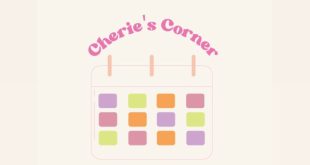Written by Erin Martin, Staff Writer
Considering childbirth, menstrual cramps, and the occasional and tragic broken nails, you would reason that women must have a high pain tolerance, right? Well, with developing technology and science, studies have revealed that women actually don’t handle pain as well as men do.
Science is ever changing and almost always on top of things that we would be ignorant about otherwise. These studies are showing that men have a higher pain tolerance, and a threshold for pain than women do. This means that women were quicker to acknowledge their pain, and they didn’t cope as well with the pain as their male counterparts.
The multiple studies went on for a span of ten years, and the results were published in “The Journal of Pain.” DNews on YouTube provided us with some information to open up our minds, and consider the ways both men and women deal with our discomforts.
To record how much pain the average person can take, people would be put through different torturous events. To the people who chose to participate, they were put through physical trials with extremely cold things, electric shocks, and different amounts of pressure being put on parts of their body. In the study involving cold presses, it was consistent that women did not react well to the pain.
However, the studies do admit that there are social and physical factors that affect how much pain certain people may feel.
The 116 American students, and 119 Indian students surprisingly showed the difference in cultures in a thought-provoking way. Expressing pain in an overt way was less acceptable for the Indian students. It suggests a kind of known belief that Eastern cultures express pain less, while Western cultures believe that pain shouldn’t be endured, and be quickly eliminated.
College students in India were also able to accept pain for a longer time than American students. For cultural reasons, some researchers believe that the set of Indian students were a lot more reluctant to express feelings of pain. Participants who have also have chronic or past medical conditions were less distracted by the pain. This study suggested that pain, to a degree, is a taught and learned behavior.
A similar result was consistent between the genders. It was interesting to read that men and women also have different views and perceptions on what “pain” is. Most of the men in the study admitted that is wasn’t appropriate for men to confess their pain. Following the unwritten rule that men are expected not to react, or only show a little reaction, this influence was a result of a huge variation in pain ratings.
Biology was also a factor in this study. Infrared technology was used to look at the pupil behavior of the participants and watched the rates that their pupil dilated. This measure was much more concrete and unbiased, because it was something that people couldn’t manipulate on their own. It was a direct correlation of how much stress they were feeling at the moment of pain.
This discovery shows that men feel pain a lot more than women do, but a lot more of our reactions may really be influenced by our perceptions and cultural beliefs. Some people can simply choose to manage their pains differently than others.
 The Spectator The independent student newspaper of Valdosta State University
The Spectator The independent student newspaper of Valdosta State University



